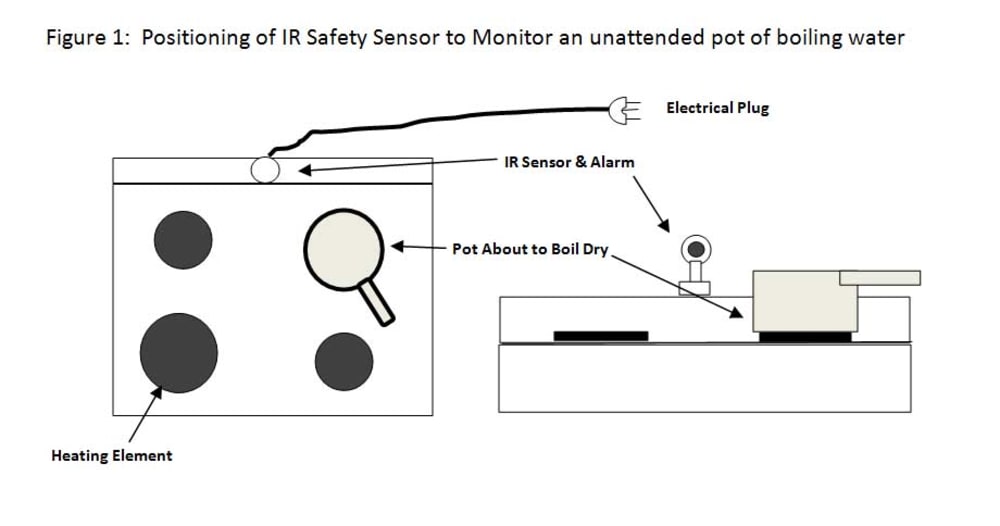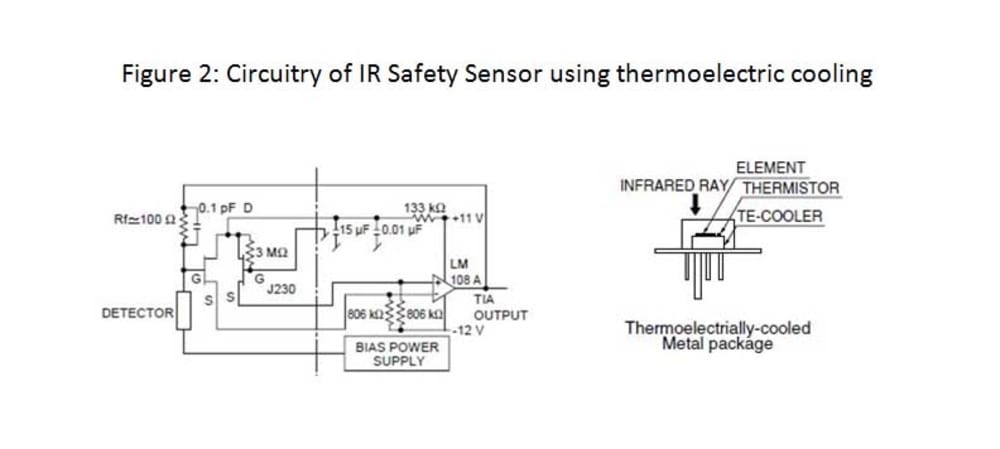Virtually everyone has had the experience of placing a pot of water onto the heating element of a kitchen range, turning the selector to "Max" and then walking to the other room while making a mental note to return "in a few minutes" to remove the boiling pot from the element. Everyone knows what usually happens next....You get immersed in paperwork and forget about the boiling pot. By the time you run back into the kitchen in a panic, the pot has almost boiled dry and you have to start again from scratch. Sometimes, if you don't make it back in time, the pot boils dry and you are then faced with a situation that could pose a serious safety hazard.
The dramatic decline in the costs of integrated circuits and electronic sensors has meant that high reliability infrared sensors are now available for home use. The proposed invention consists of an infrared sensor with supporting circuitry tied to a warning system such as an alarm. When a metal pot containing water is heated, its temperature remains stable as long as the water is boiling. However, the moment the pot boils dry, the temperature of the pot rises rapidly. This potentially dangerous situation can be detected by an IR sensor.
IR detectors are of two types: Thermal and quantum. Thermal detectors use the IR energy as heat and their photo-sensitivity is independent of wavelength. Thermal detectors do not require cooling, but have relatively slow response times and low detection capability. Quantum detectors have higher detection performance and faster response speed, but their photo-sensitivity is dependent on wavelength. In general they must be cooled for accurate measurement.
For the purposes of making an economical home detector, a thermal IR detector is sufficient. Most heated metals radiate at a wavelength of between 4 to 10 micro-meters and it is relatively easy to set the sensor to detect when a pots external temperature starts rising rapidly above 100 oC. The emissivity of glossy metals commonly used in pots is rather low, at about 0.1. Thus, the output signal from the detector will generally quite small and so it needs to be amplified. The preamplifier is designed with an impedance that matches the detector, noise and bandwidth. Performance of the detector can be significantly improved by cooling, and this can be accomplished using thermoelectric cooling.
The advantages with this simple system are as follows:
•Device has a swivel head, so it can be pointed in any direction and it can monitor several pots at once
•It has a magnetic base so it can be mounted on any metal surface
•It is portable so it can be used to monitor small apartment "hot plates" or it can be used when travelling
•It is based on proven, solid state technology, so it is reliable.
Like this entry?
-
About the Entrant
- Name:Paul Tinari
- Type of entry:individual
- Hardware used for this entry:DELL Work StationSoftware used for this entry:AutoCAD
- Patent status:none





